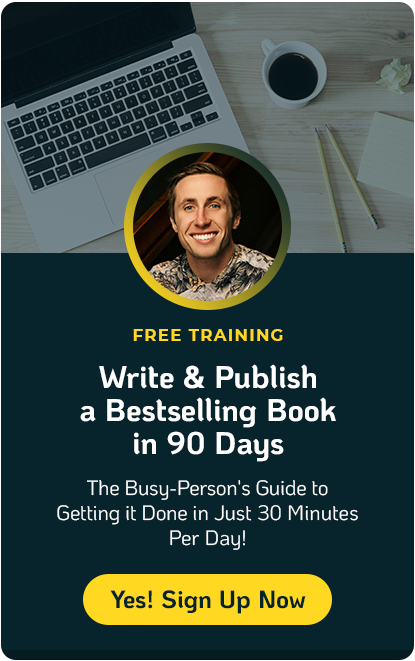It’s not easy being a startup blogger.
You don’t have much of a subscriber list yet.
You post and post, and not much happens. Nobody seems to care enough to actually put in their email and sign up.
Know how to bust out of this?
How to Get More Blog Subscribers
[thrive_text_block color=”blue” headline=””]Join the FREE online workshop: Get 45% More Social Shares Without Hustling Like a Used-Car Salesman. CLICK HERE [/thrive_text_block]
There are certain types of blog posts that rivet readers’ attention—and get them clamoring to subscribe. They see you’ve got information they don’t want to miss!
If you’re not getting comments like: “I printed this out and taped it to the wall near my computer,” or “I bookmarked this because I need to reread this each morning,” you haven’t hit this level of premium content delivery yet.
Dedicate yourself to writing the sort of exceptional, high-value posts that make you stand out, and you’ll make subscribing to your blog irresistible.
What sorts of blog posts am I talking about? Here are the top seven kinds that have taken my blog from zero to 17,000 subscribers:
1. Long, super-useful resource lists
Could you create a toolkit for readers on how to do something they’re trying to accomplish, or a list of places they could find work?
Not recycled stuff from around the Internet, but unique, better-organized, more deeply researched and complete information on how to do something than they can find elsewhere?
Think about a list you could create of valuable resources that you haven’t been able to find online, that your readers desperately need. Hook into their primal needs, and find information that helps them be healthier, wealthier or happier. When you meet these fundamental needs, readers adore you.
I began creating lists of paying markets for writers years ago, and they quickly became some of my most popular and shared posts ever.
Long lists tend to get a lot of social media traffic, which means they get more eyeballs to your blog, and convert more of them to subscribers, too. I try to create a longer, better list each time I put out a new set of listings.
Example: Write to Done: 102 Resources to Transform Your Writing
2. Exposés
Is there something shady going on that affects your readers? If so, calling it out can really get readers talking… and subscribing.
There are a lot of scams out there targeting freelance writers, and I have a background as an investigative journalist, so this has been a prime area for me. I’ve done more than one multi-interview exposé, about whether sites really pay writers, and if so, how much. They tend to get tons of comments and shares, as people vent about their personal experience with the topic.
In fact, one exposé post—in which I gathered 14 writers’ first-hand experiences writing for content mills—is one of my all-time most popular posts. Exposés can often get you traffic for months and years to come, because few bloggers take the time to put this much work into their posts, and people are always looking for inside dirt. If you can warn readers off a bad situation, they will adore you.
If you’re willing to invest the time to talk to people, do research, and turn up facts, you can put together a sensational post that turns your blog into an essential resource for your readers. Be a crusader, expose injustice, right wrongs — and gain loyal fans.
Example: Make a Living Writing: Writing for Guardian Liberty Voice: 10 Writers’ Stories
3. Analyze and forecast
We live in a fast-changing, complex world. Readers would like you to help them make sense of what’s going on.
Even better, they’d like to know what’s going to happen next. Be the one who can tell them that, and they’ll think you’re an indispensable genius and hang on your every word.
On my own blog, for instance, I’ve analyzed major mergers of writing platforms and what the change will mean for writers who use them. I’ve also broken down the earnings of a publicly-held content mill, to spotlight how little of their income went toward paying writers.
Take the time to walk readers through what’s happening in their lives, do the math for them, and they will love you for it.
Example: Salesforce.com: Key Trends Transforming the Advertising Industry
4. Tackle a controversy
If there’s a tricky issue people are arguing about in your space, taking a contrarian view on it can be a great way to grab attention and to establish yourself as someone with a strong point of view. Both of which are great for bonding with readers and making them feel they need to stay in touch to get your insightful slant on current events.
Here’s an interesting example of a controversy post, that plays both ends of the short-versus-long-blog-posts debate, to help readers decide which format would be best for their own blog:
Example: Copyhackers: Seth Goes Short. Buffer Goes Long. Here’s What You Should Do With Your Content.
5. Detailed how-to’s with examples
One thing online readers are crying out for is someone to show them *exactly* how to do technical things that boggle them. Take it from the very top, answering 101-level questions on the topic, like “What is a search engine?” Don’t assume your readers have a background in how to do this task.
Give them screen shots and really break it down for them. You’ll quickly become the go-to source for information on your topic.
Example: Write to Done: How to Proudly Design 3D Book Covers for Free
6. Peek behind the curtain
People love the inside line on how you do what you do. We all want to know how that sausage is made, and exactly how tasty it is when it comes out of the oven. That’s why income reports have been a popular staple of blogs from early on. Other examples are post-mortems on a launch or sales campaign.
Like how-to’s, this format benefits from a multimedia approach. Get a screen shot of that rude tweet or email you got! Show the stats. Back up your story with all the evidence and details you can gather.
Example: Ray Edwards: Anatomy of a Six-Figure Launch (podcast & transcript)
7. Massive fails
It’s amazing how much human beings love to read, in great detail, about how someone else screwed up—especially if the story also unpacks lessons on how to avoid these mistakes. I’ve gotten huge response to posts about how I failed to sell my first e-book, with tips on better e-book marketing, for instance.
The key to a good massive-fail post is to take it beyond a dry, boring recitation of facts, and include your emotions, observations and reactions as things went wrong. It’s like an educational soap opera — in a blog post!
Example: Mirasee: 7 Lessons Learned from a Failed Business Partnership
Once you get the hang of delivering these high-value post types, you can take it a step further and start using more than one of these concepts in a single post. For instance, you could do a detailed how-to that also offers a peek behind the curtain of how you do things (#5 & #6), or a massive-fail post that also offers in-depth analysis of what happened (#3 & #7).
The days when posting short, low-value bits daily would get you attention from Google are over. Instead, think quality, not quantity — and deliver meaty, fascinating posts readers won’t find anywhere else. Then, watch your subscriber list fill up.
[thrive_text_block color=”blue” headline=””]Join the FREE online workshop: Get 45% More Social Shares Without Hustling Like a Used-Car Salesman. CLICK HERE [/thrive_text_block]

















